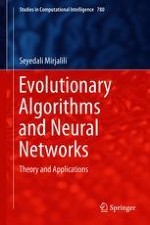2019 | OriginalPaper | Buchkapitel
9. Evolutionary Deep Neural Networks
verfasst von : Seyedali Mirjalili
Erschienen in: Evolutionary Algorithms and Neural Networks
Aktivieren Sie unsere intelligente Suche, um passende Fachinhalte oder Patente zu finden.
Wählen Sie Textabschnitte aus um mit Künstlicher Intelligenz passenden Patente zu finden. powered by
Markieren Sie Textabschnitte, um KI-gestützt weitere passende Inhalte zu finden. powered by
